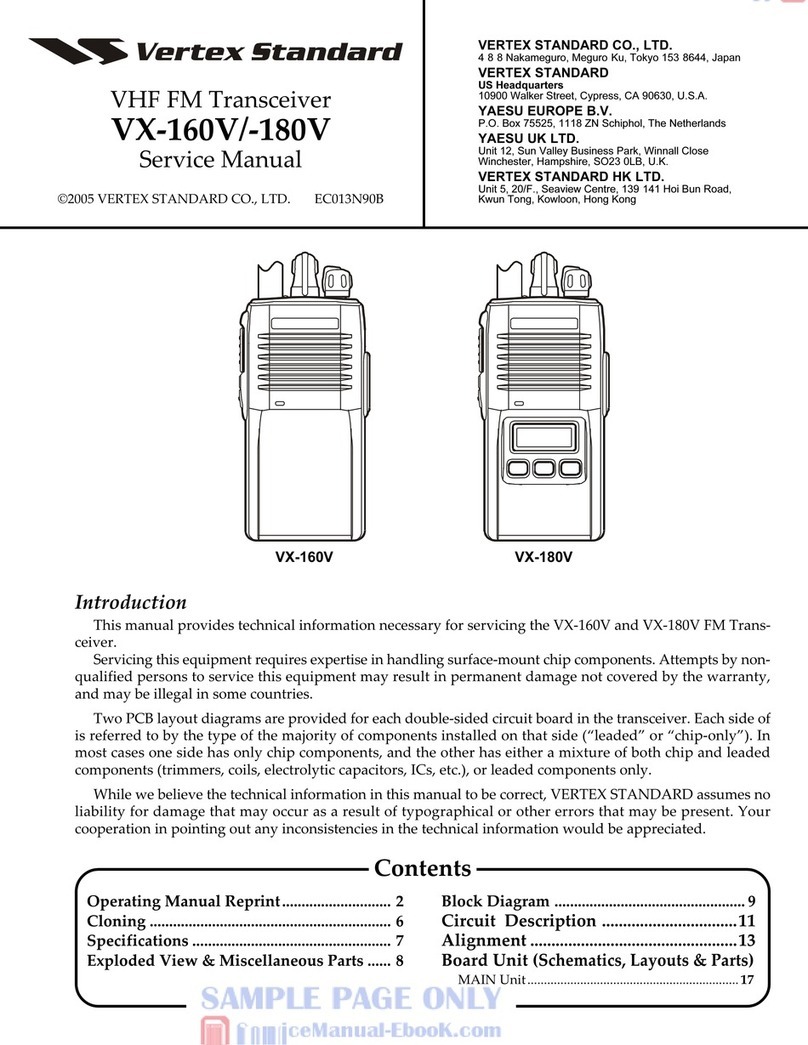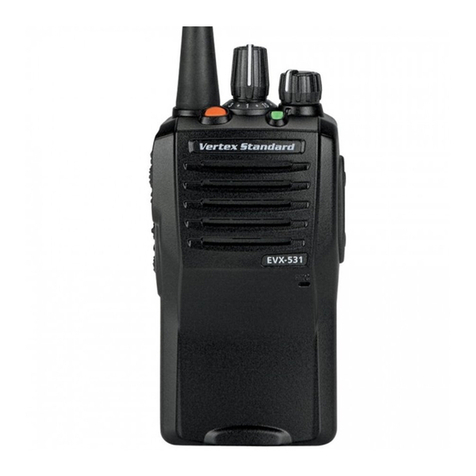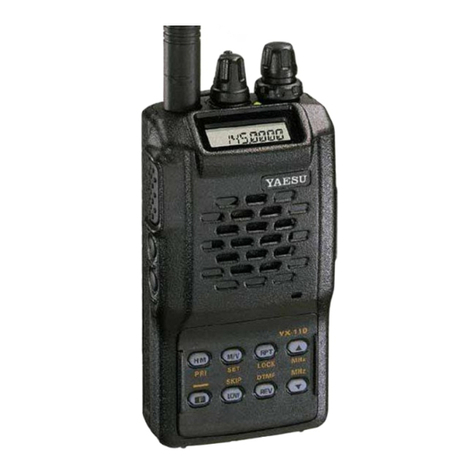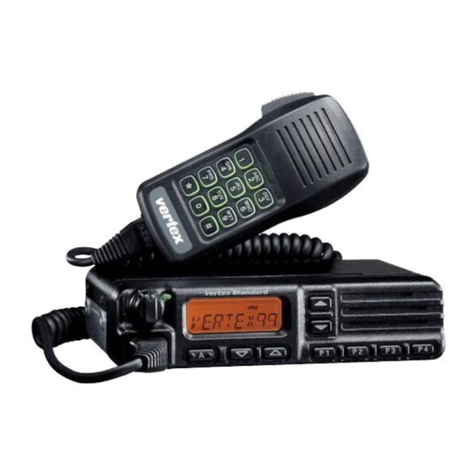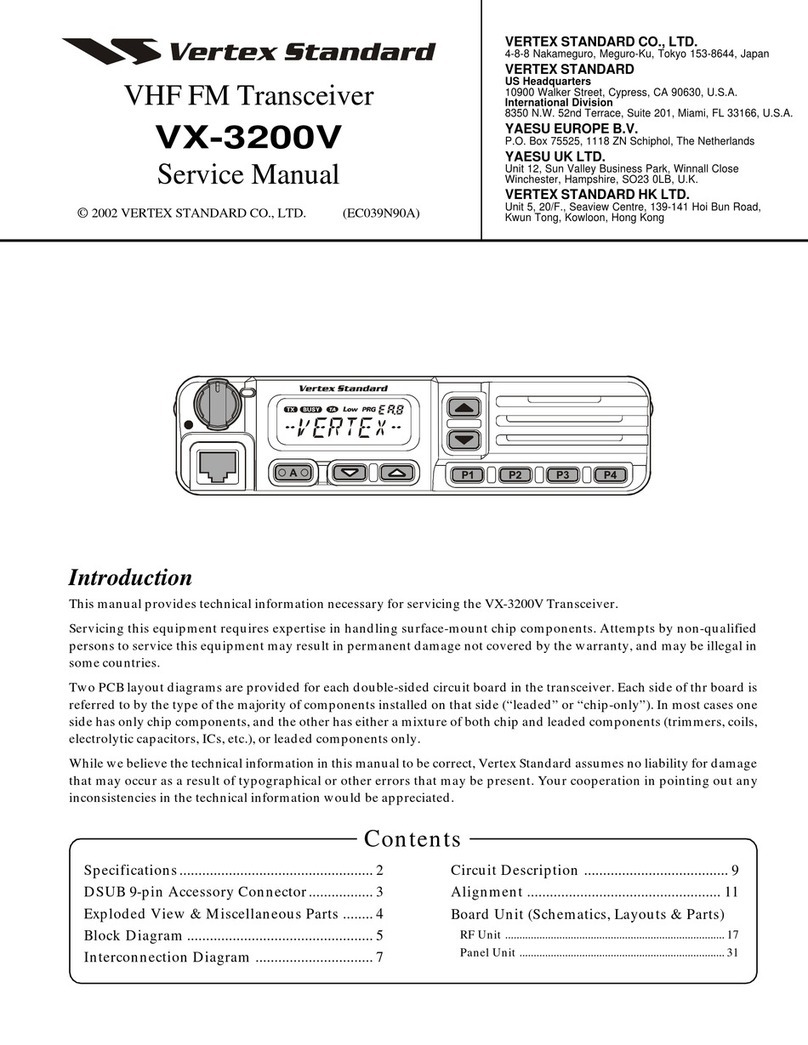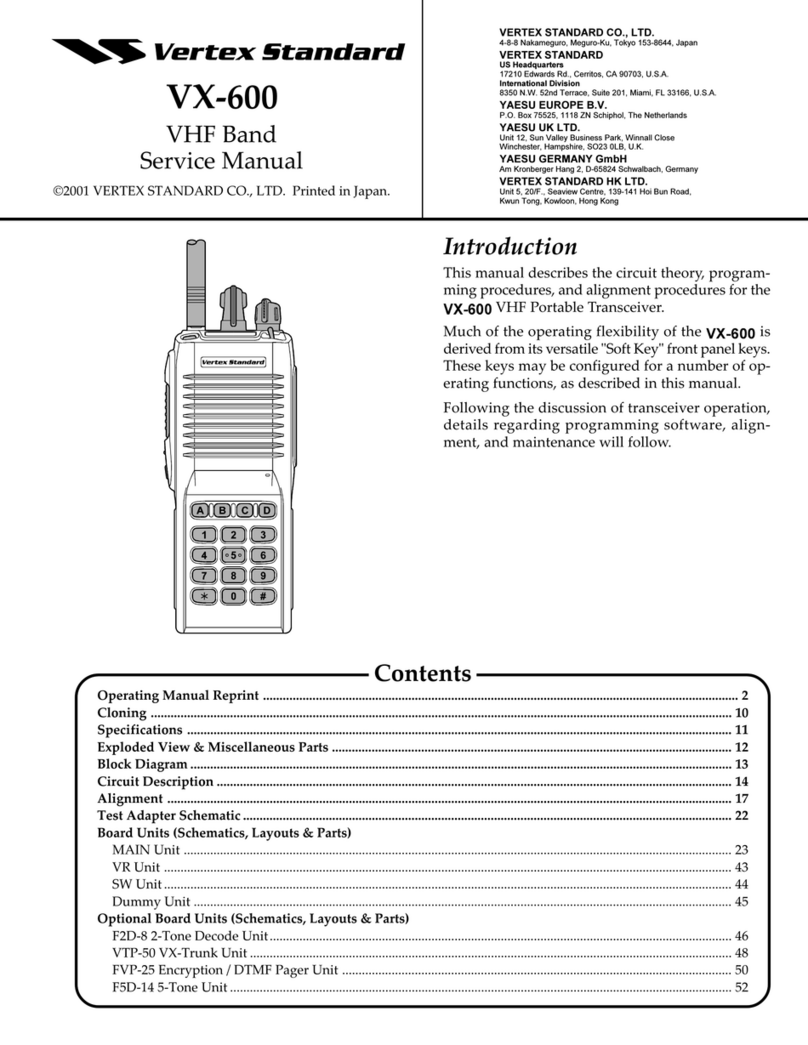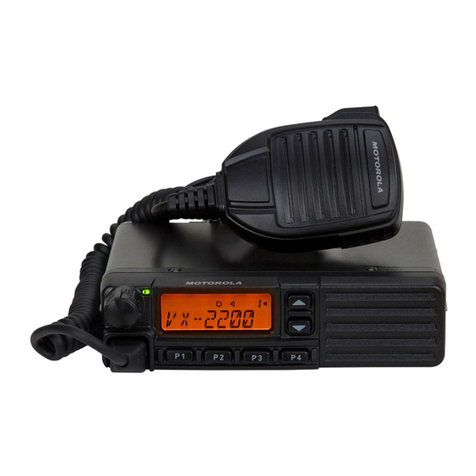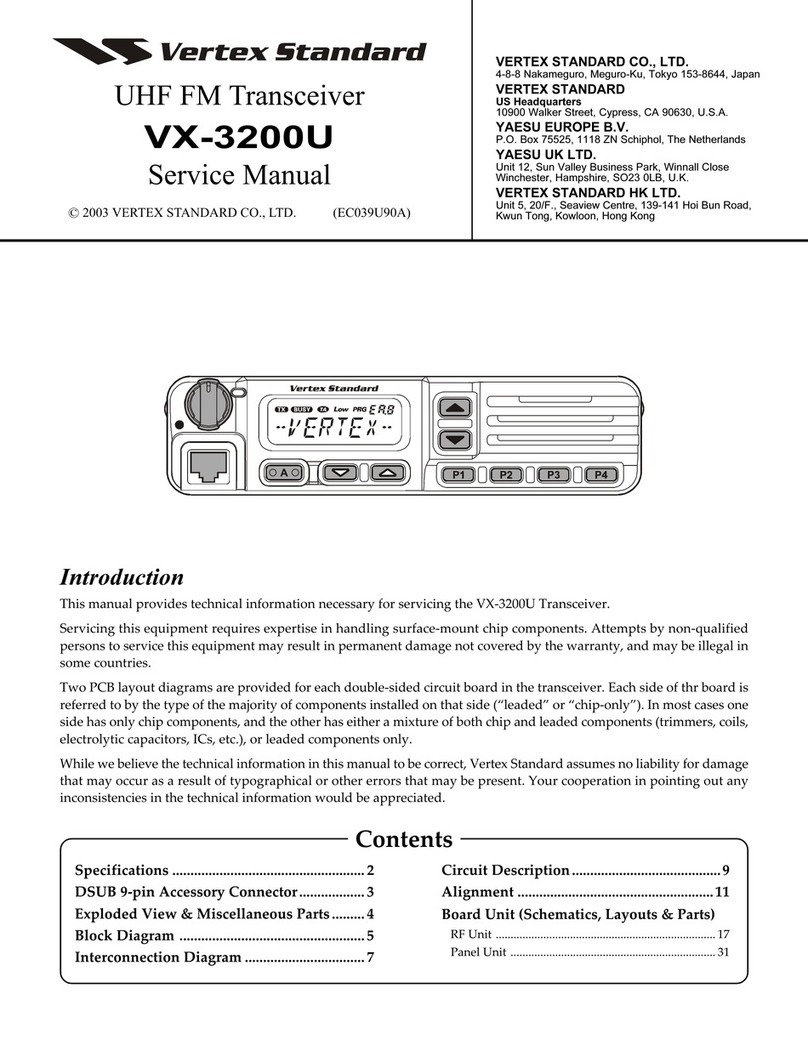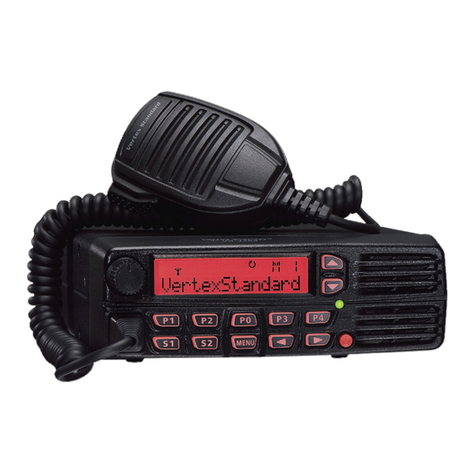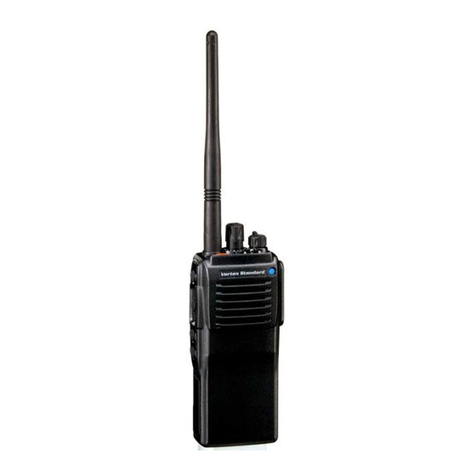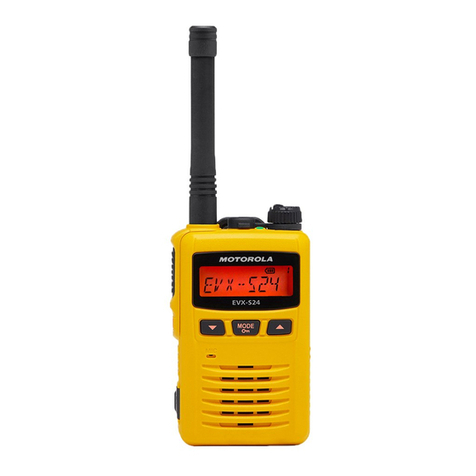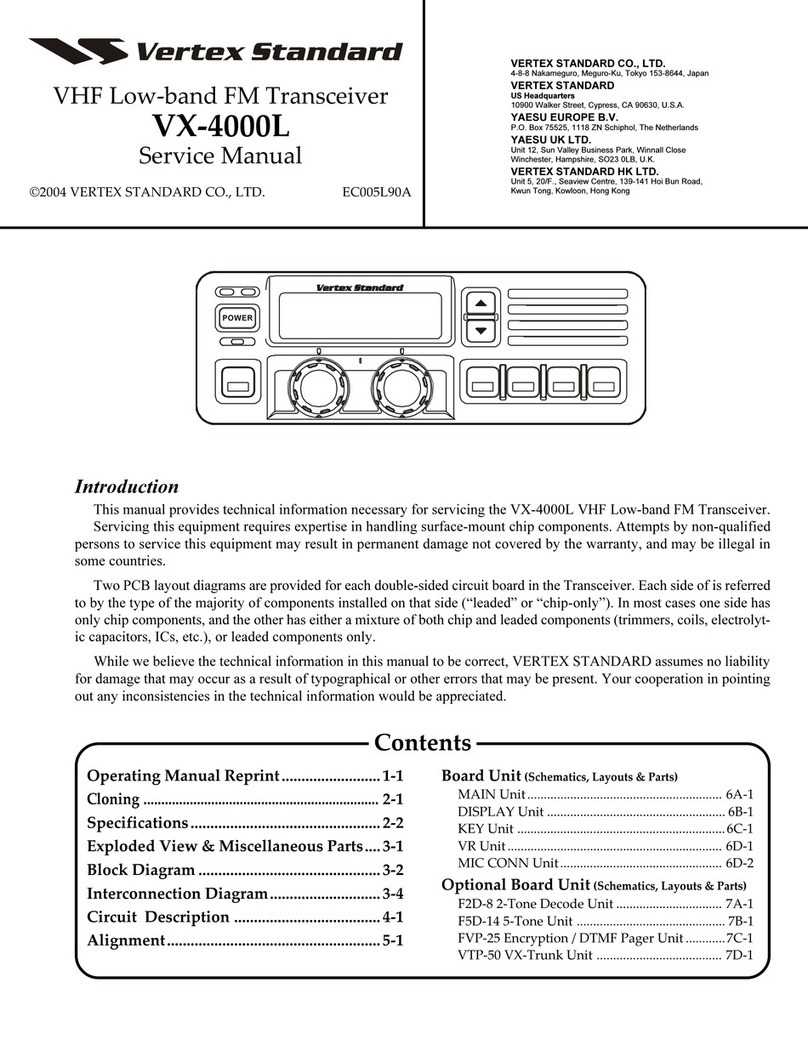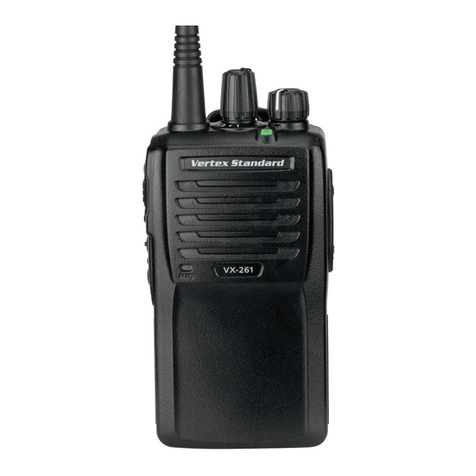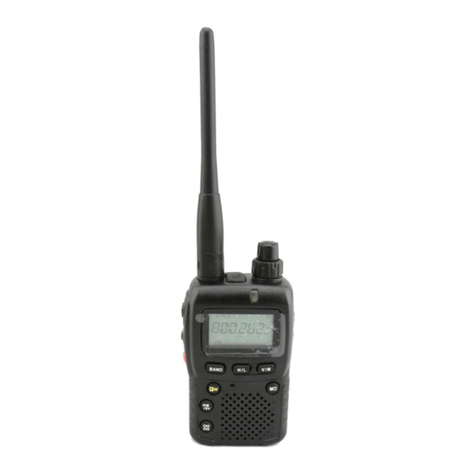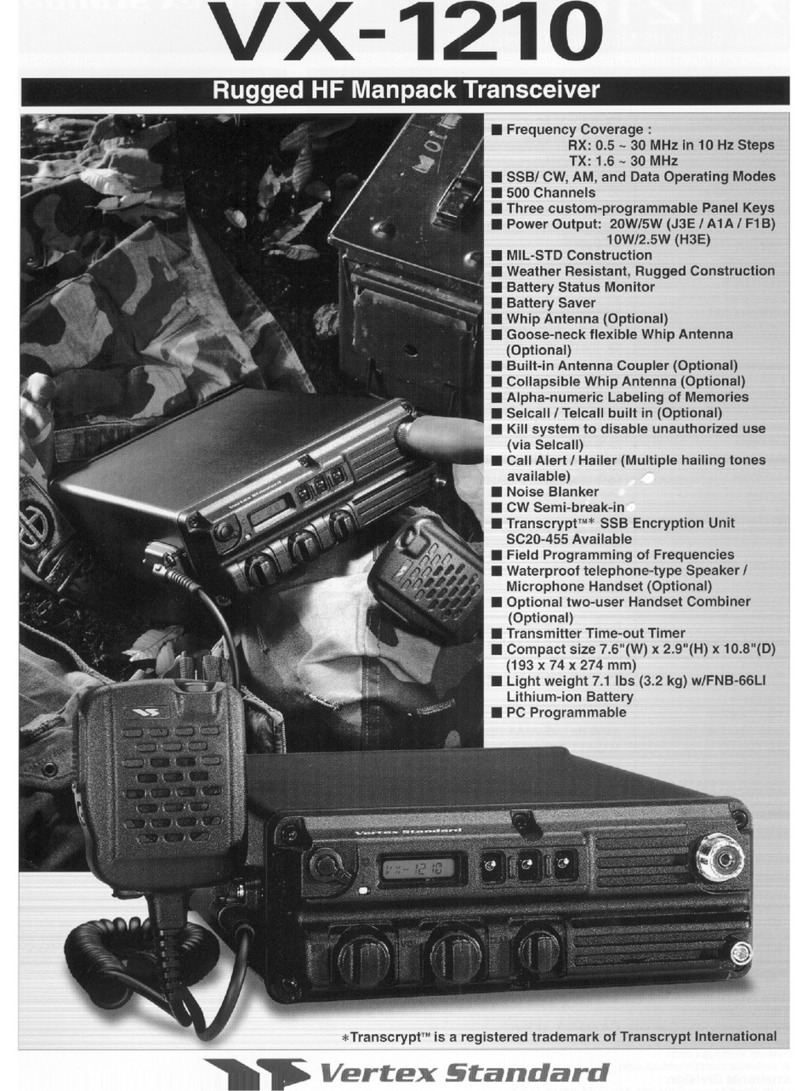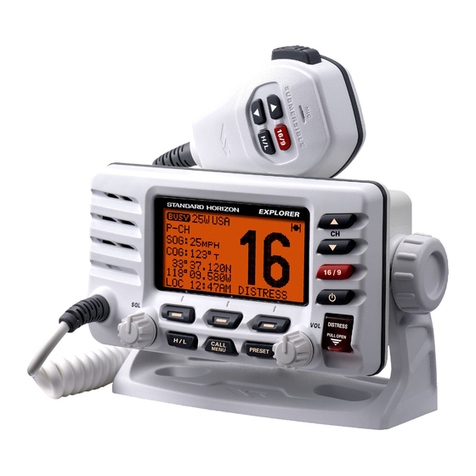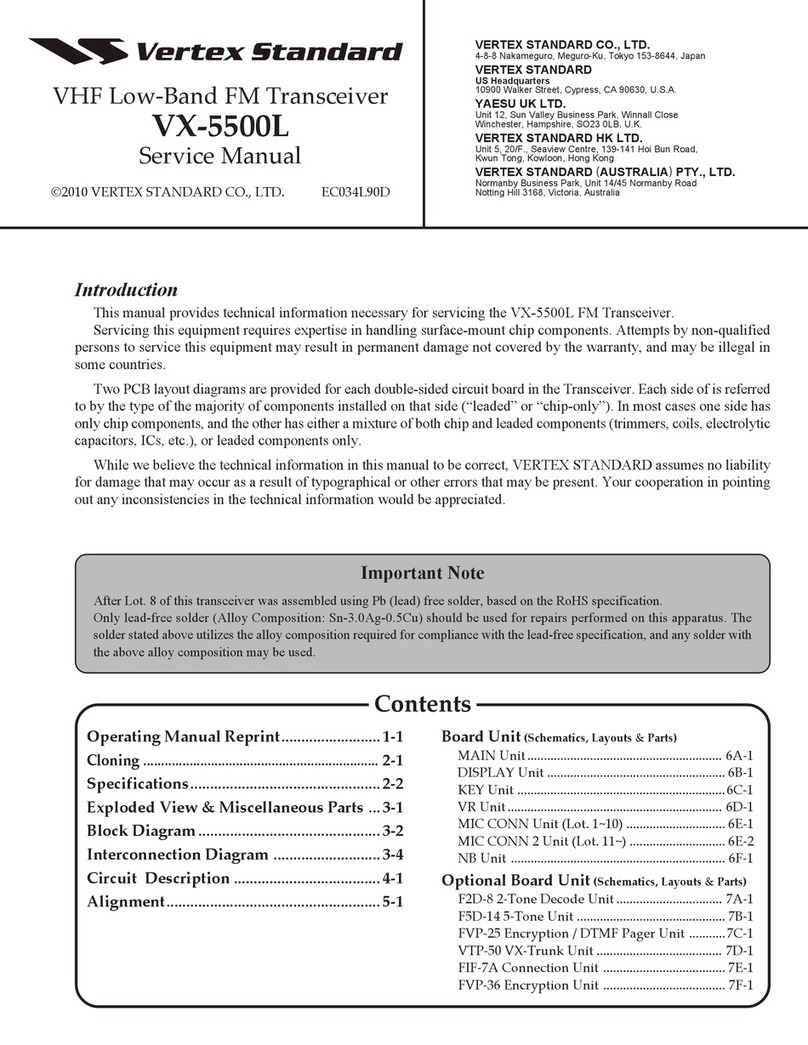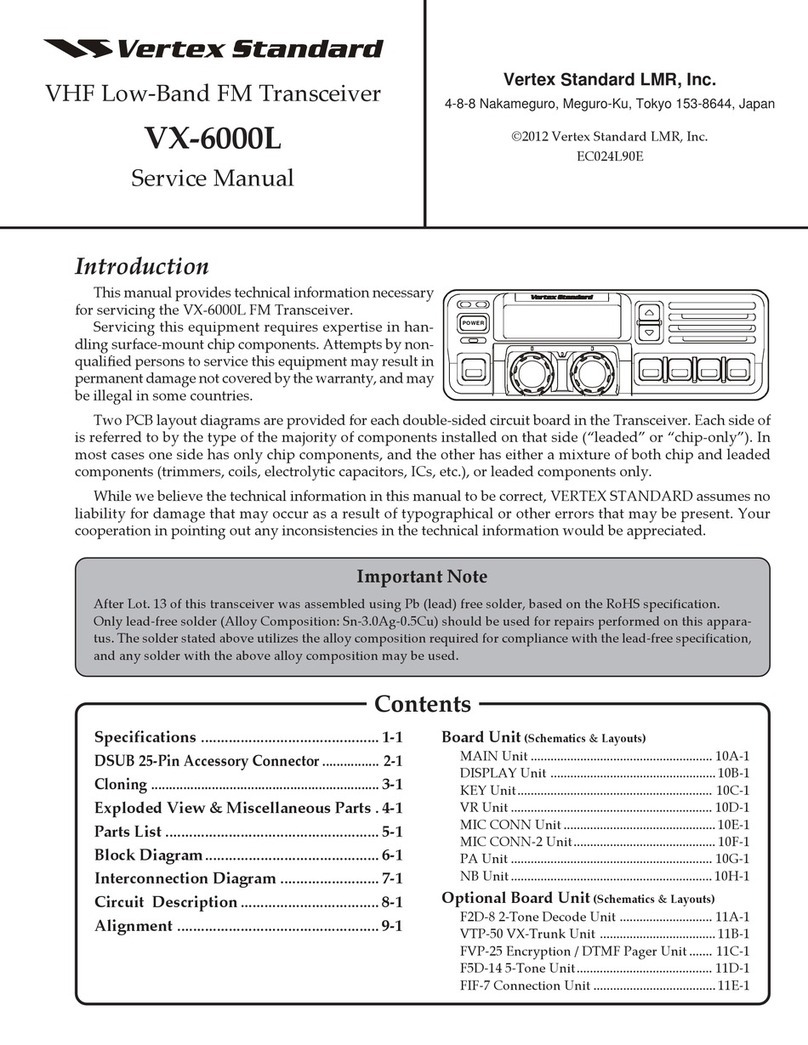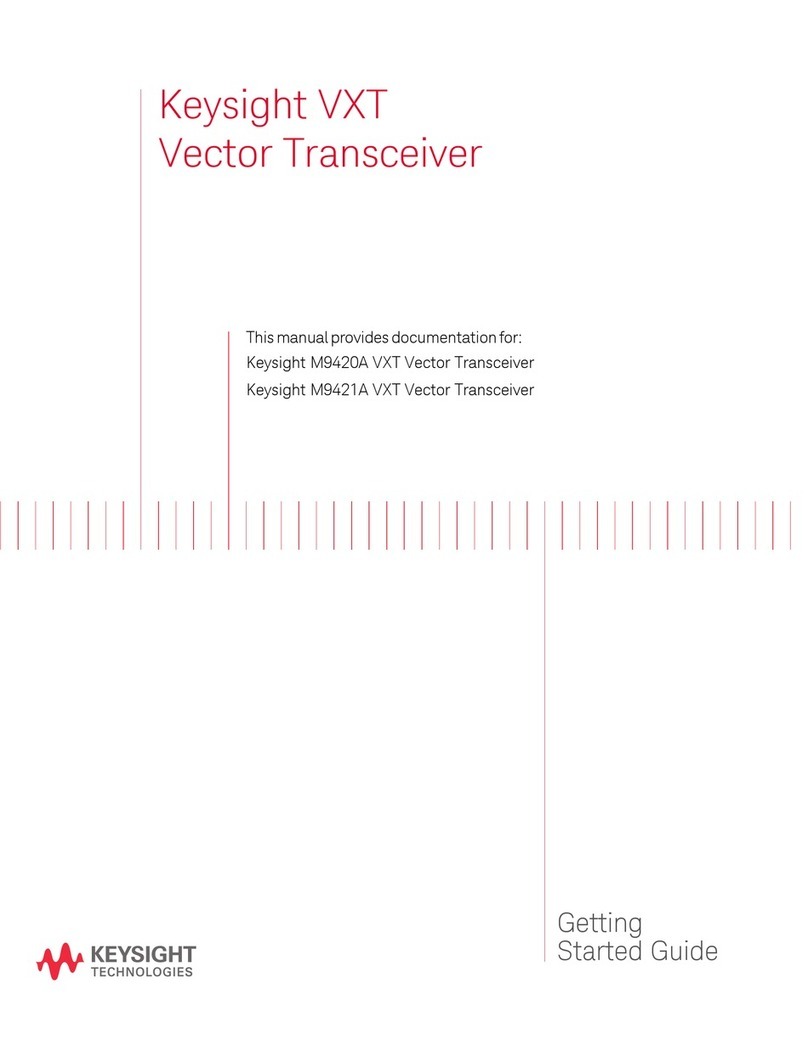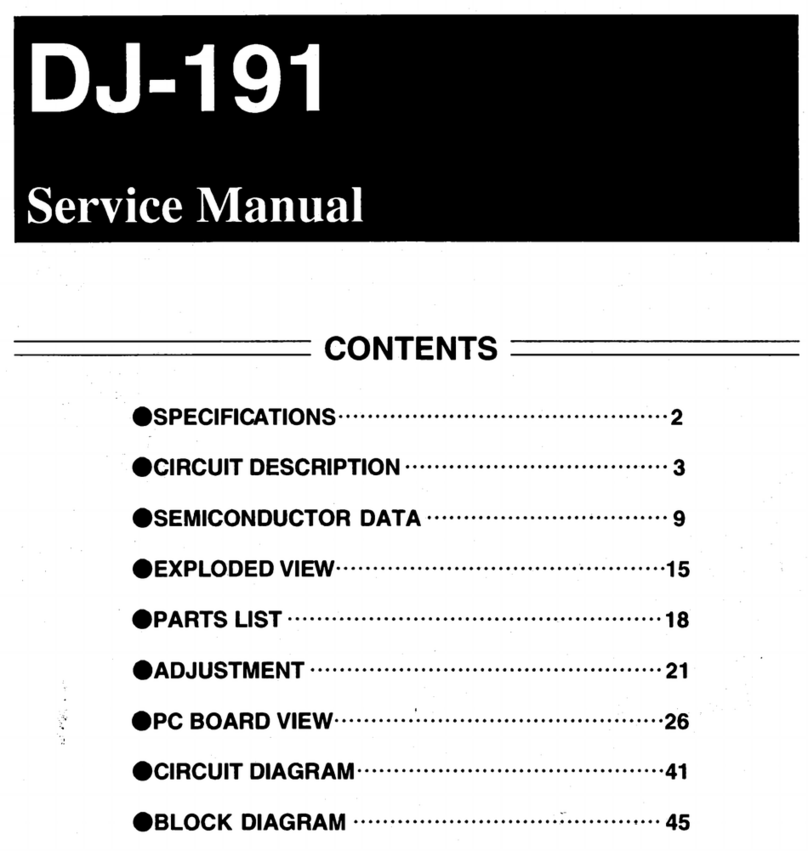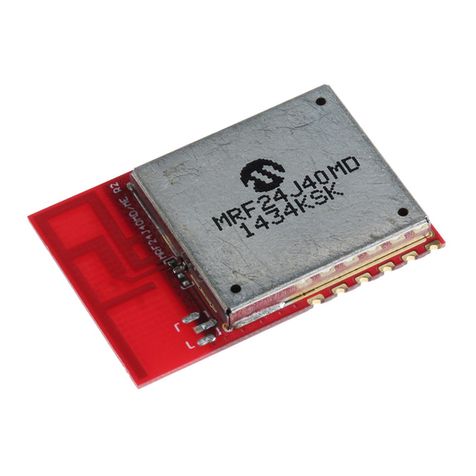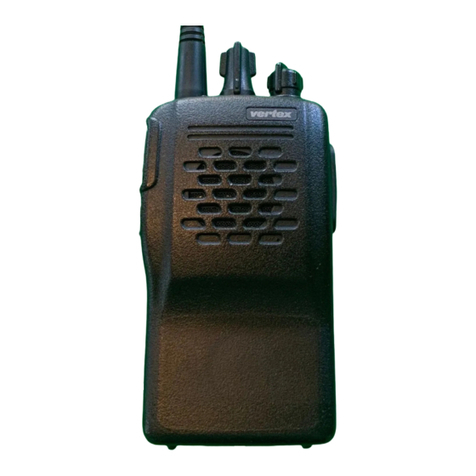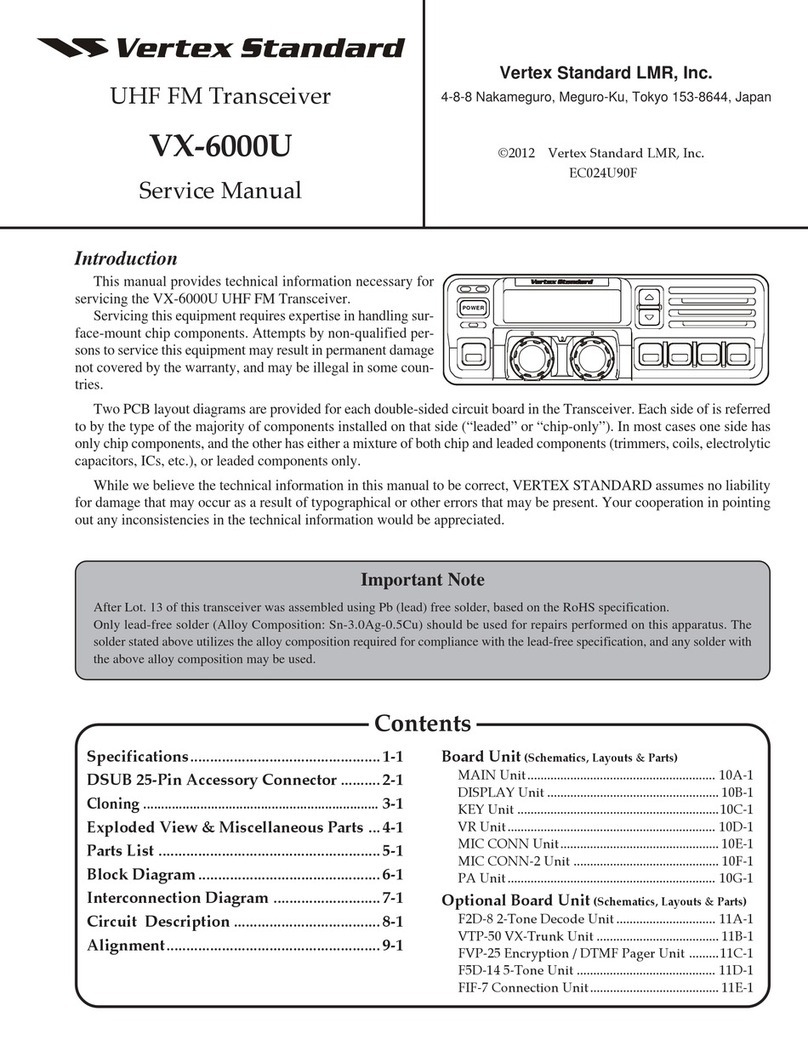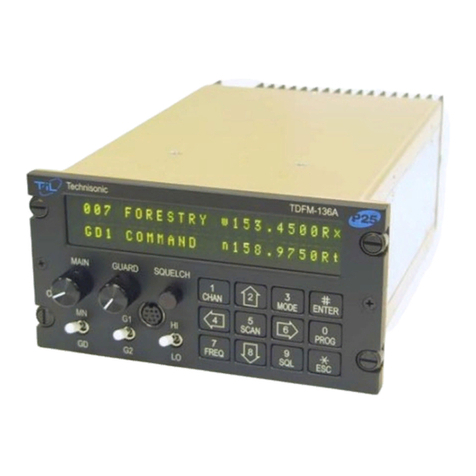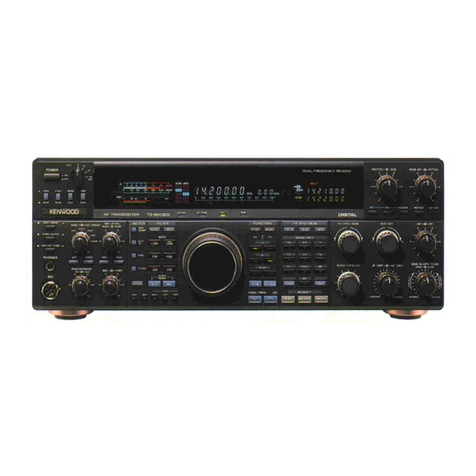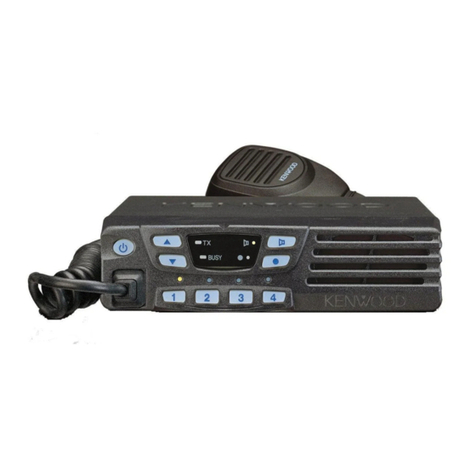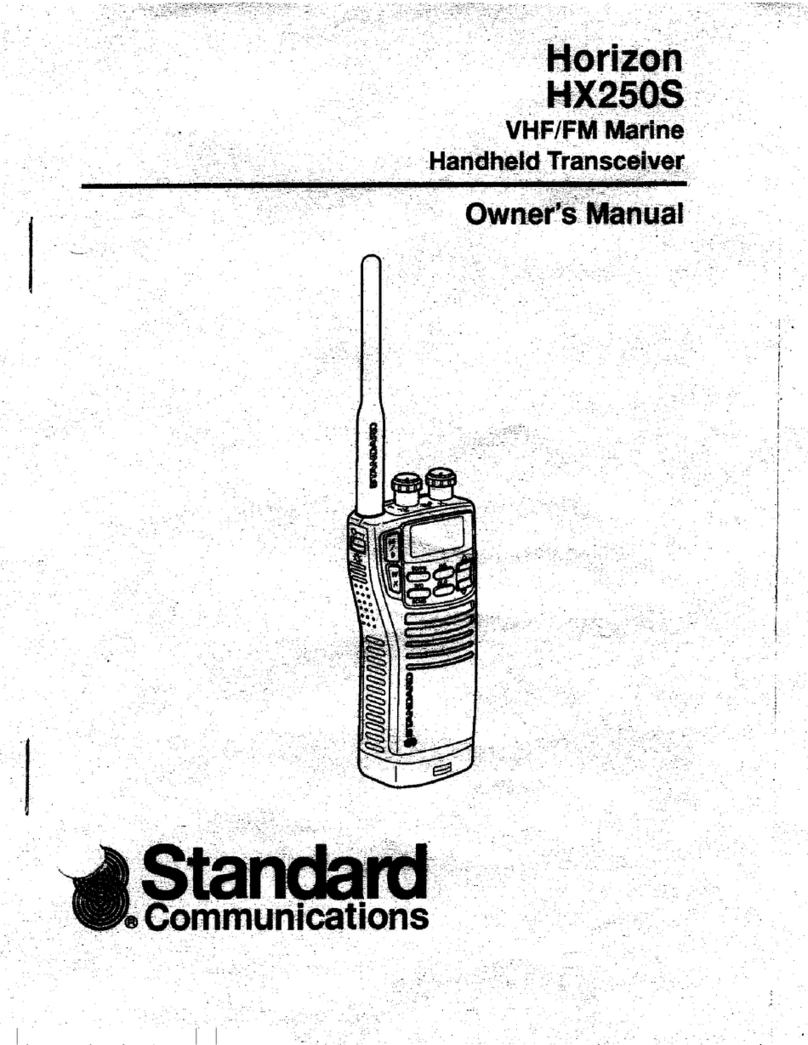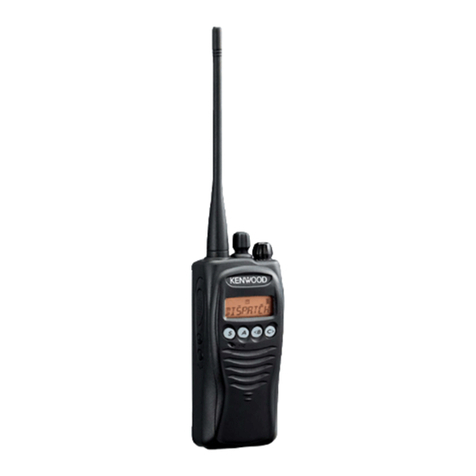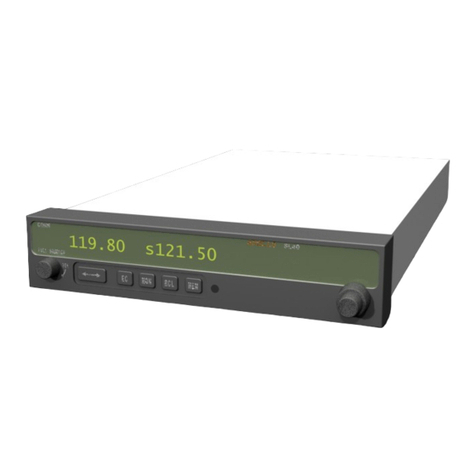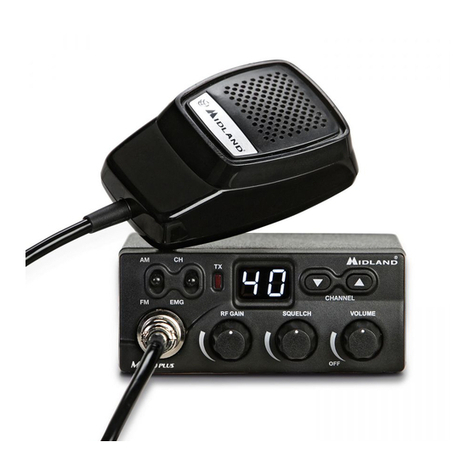
8
The high frequency signal components are ampli-
fied by Q1075 (LM2902PWR), and their level is set
by Q1020 (M62364FP) to establish proper balance
of the level between high- and low-frequency com-
ponents. After that, the signals modulate the trans-
mit carrier via modulator D1030 (1SV286) of the
VCO.
3-2. Drive and Final Amplifier Stages
The modulated signal from VCO Q1051 (2SC4227)
is buffered by Q1040 (2SC5005) and amplified by
Q1032 (2SC5005). Then the signal is buffered by
Q1027 (2SC3356) for delivery to the final amplifier
driver Q1024 (2SK3475). The low-level transmit sig-
nal is then applied to Q1019 (2SK3476) for final am-
plification up to 5 watts output power. The transmit
signal then passes through the antenna switch D1012
(HVU131) and is low-pass filtered to suppress har-
monic spurious radiation before delivery to the an-
tenna.
3-3. Automatic Transmit Power Control
The current detector Q1072 (NJM12902V) detects
the current drawn by Q1019 (2SK3476) and Q1024
(2SK3475), and converts the current difference to a
voltage difference. The output from the current de-
tector Q1072 (NJM12902V) is compared with the ref-
erence voltage and amplified by the power control
amplifier Q1072 (NJM12902V). The output from
Q1072 (NJM12902V) controls the gate bias of the fi-
nal amplifier Q1019 (2SK3476) and the driver Q1024
(2SK3475). The reference voltage switches among
four values of TX Power (“High,” “Low3,” “Low2,”
and “Low1”), as controlled by Q1020 (M62364FP).
3-4. PLL Frequency Synthesizer
The frequency synthesizer consists of PLL IC Q1068
(SA7025DK), the VCO, TCXO (X1003), and buffer
amplifier. The output frequency from the TCXO is
16.8 MHz, and the tolerance is ±2.5 ppm (in the tem-
perature range —30 °C to +60 °C).
3-4-1. VCO (Voltage-Controlled Oscillator)
While the radio is receiving, the RX oscillator Q1046
(2SK508) in the VCO generates a programmed fre-
quency between 184.85 and 224.85 MHz as the 1st
local signal. While the radio is transmitting, the TX
Circuit Description
port) of Q1067 (CPU: LC87F5BP6A). When a car-
rier is received, the DC voltage becomes low because
the noise is compressed. When the detected voltage
to the CPU is high, the CPU stops AF output by set-
ting Q1083 (DTC114TE) “OFF” (by making pin 59
of the CPU “High” level). When the detection volt-
age is low, the CPU switches Q1083 (DTC114TE)
“ON” by making pin 59 “Low,” and the AF signal is
allowed to flow.
2-5-2. Carrier Squelch
The pin 15 (A/D port) of CPU Q1067 (LC87F5BP6A)
detects the RSSI voltage output from Q1065
(TA31136FN) at pin 12, and controls the AF output.
The RSSI output voltage changes according to the
signal strength of carrier; a stronger signal makes
the RSSI voltage higher. The processing of the AF
signal control is same as Noise Squelch, except that
the switching threshold is adjusted so as to be 3 dB
higher than the “tight squelch” sensitivity.
3. Transmitter System
3-1. MIC Amplifier
The AF signal from the internal microphone (pin 21
of J2002 on the Display Unit) or an external micro-
phone (pin 6 of J2002 on the Display Unit) passes
through microphone selection switch Q2015
(CD4053BPWR) and is amplified by microphone
amplifier Q2014 (LM2904PWR), thereafter passing
through the microphone gain controller, Q1020
(M62364FP). The AF signal then passes through
compandor Q1022 (LA8630M). When not using the
compandor, the CPU bypasses the compandor cir-
cuit and feeds the signal to the pre-emphasis circuit.
Q1078 (CD4066BPWR) becomes “OFF” when an op-
tional signaling unit is attached, and the AF signal
from Q1022 (LA8630M) is redirected via the signal-
ing unit. If a signaling unit is not installed, Q1078
(CD4066BPWR) becomes “ON,” the signal bypasses
Q1078 (CD4066BPWR), and it instead is applied to
the pre-emphasis amplifier Q1031 (AK2345). The
signal passes through the limiter and splatter filter
of Q1031 (AK2345), and is adjusted for proper de-
viation at Q1020 (M62364FP). The low frequency
signal components (CTCSS, DCS, etc.) are then am-
plified by Q1075 (LM2902PWR) and used for direct
modulation of the reference oscillator, TCXO X1003.




















